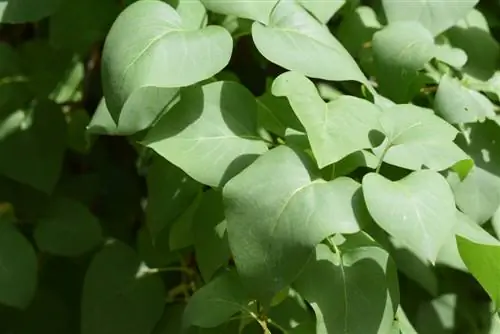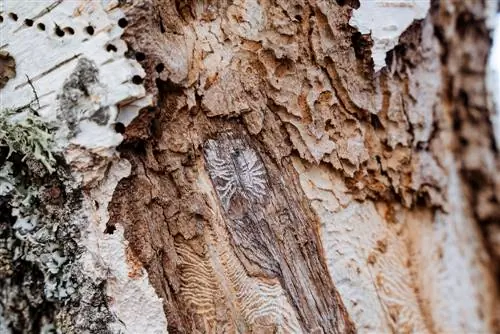- Author admin [email protected].
- Public 2023-12-16 16:46.
- Last modified 2025-01-23 11:22.
You can immediately recognize a ginkgo tree by the characteristic, fan-like shape of its leaves. There is no other tree species in the world whose foliage resembles a ginkgo leaf. This usually grows up to eight centimeters long. But why does the ginkgo sometimes get noticeably smaller leaves?

Why does my ginkgo have smaller leaves than usual?
Smaller leaves on the ginkgo tree are usually due to root problems, often after transplanting. The tree needs two to three years to form new roots and restore normal leaf size. Regular watering and good soil conditions promote root formation.
Why does the ginkgo only have very small leaves?
If the ginkgo suddenly only has very small leaves when it sprouts in spring, then there is probably aroot problem. As a rule, this symptom occurs after the tree has been transplanted - regardless of how carefully and carefully this measure was carried out.
When moving, numerous roots are inevitably torn or damaged, which the ginkgo must first replace in its new location. That's why the tree initially puts its energy into growing the roots, which is why less vital plant parts such as the leaves are neglected and therefore remain smaller.
How long does it take for the foliage to develop back to normal?
If the ginkgo only sprouts small leaves after transplanting, only patience will help - it will takeabout two to three years until the tree stabilizes to some extent again and has enough new ones has formed roots. If this is the case, the small leaves will return to their normal size on their own.
By the way, the leaves of ginkgos grown in pots or bowls also remain smaller if they do not have enough space for their roots. Bonsai breeders who want to keep their ginkgo small take advantage of this fact.
How do the small leaves of ginkgo become big again?
In order for the small leaves to become big ones again, you and your ginkgo need above allpatience. Ginkgo trees naturally grow very slowly. However, you can support your tree in its efforts to re-establish roots. This includes above all:
- do not fertilize in the year of transplanting
- water enough, especially on hot and dry days
- Don’t let the soil dry out!
- loose clay soil with sand or something similar
Above all,Wateringis important for the formation of new roots, especially since the tree itself can absorb less water than needed due to the damage to the roots. However, make sure thatno waterlogging forms.
Tip
Cut back ginkgo before transplanting
With a little preparation, you can make it easier for your ginkgo to move from one location to another. For example, you should generously stake out the tree disc and also remove some of the branches and twigs. In this way, you compensate for the root losses from the outset so that the tree has fewer problems when transplanted. If possible, transplant the ginkgo before it sprouts in spring or early autumn.






